On This Page
Introduction
Food allergies are infrequent but sometimes our immune system responds to some food protein violently resulting in allergy. For managing Milk protein allergy Soy has been successful for a longer period but sometimes the body’s immune system causes hypersensitivity to soy protein.
Soy allergy is a hypersensitivity reaction, which is immune-mediated to soy protein, an allergen that is commonly found in many food products. The first soy allergy case was reported in 1934. Approximately 16 potential soy proteins act as allergens and cause mild to severe symptoms which range from digestive discomfort to life-threatening conditions. Soy allergy is mainly seen in children but may continue during adulthood.
As per Ayurveda, soy allergy can be categorized as an incompatible food (Viruddha Ahara or Aahara Asatmayta) and may occur due to the vitiation of Kapha and Pitta Dosha. Here, you will find the causes, symptoms, diagnosis, and Ayurvedic treatment for soy allergy like Panchakarma Procedures (internal purification of the body), Yoga procedures, Single Herbs, Diet and Lifestyle modification, etc. The therapy helps in balancing the vitiated Kapha and Pitta, which will help to fight against soy allergy.
What is Soy Allergy?
Soy allergy is the abnormal response of the immune system to soy protein where it misidentifies soy protein as a threat and triggers the release of histamines resulting in a hypersensitivity reaction.
Which Soy Protein Acts as a Common Allergen?
A recent study revealed that approximately 16 soy proteins are identified as potential allergens for triggering immune responses in sensitive people. The 16 common soy protein allergens are:-
- The alpha subunit of beta conglycinin (the main soy allergen in children)
- 7S Globulin (Conglycinin)
- 11S Globulin (Glycinin)
- Beta- Conglycinin
- Bowman-Birk inhibitor (seed storage protein)
- Gly m TI (Kunitz Trypsin inhibitor)
- Gly m Lox (Lipoxygenase)
- Profilin
- Gly m 4 (Defensin-like protein)
- Vicilin- like protein
- Gly m Bd 30K (P34 protein)
- Water soluble soy fractions 9 Soybean albumin)
- Iso-flavone binding protein
- Cupin protein belongs to the superfamily resistance to digestion
- Heat and digestion-resistant storage globulins
- Trypsin inhibitors
Soy Allergy – As Per Ayurveda
As per Ayurveda, different types of allergies are the result of an imbalance of Dosha in the body and due to weakened digestive fire (Mandagni). Soy allergy as per Ayurveda can be correlated to incompatibility (Asatmyata) or incompatible diet (Viruddha Aahara) which by improper digestion and compromised immune system results in the accumulation of the toxins (Ama) in the body and gives abnormal immune response i.e. soy allergy.
Who Gets Affected by Soy Allergy?
Soy allergy is predominantly seen in infants and young children. Adults also suffer from this allergy, but the prevalence is less as compared to children. Along with this, people with a family history of pre-existing atopic conditions like asthma, eczema, etc., and various other allergies are more prone to soy allergy.
How Common is Soy Allergy?
As per the survey, the prevalence of soy allergy in the general population is 0.3 to 3% approximately. Approximately 0.2 to 0.45 of the population worldwide suffer from allergies in which soy protein is classified as an allergen. As per a recent study, 10- 14% of individuals with a cow milk allergy also have soy allergy. Soy allergy is more common in children affecting about 0.4 % and in adults it is estimated around 0.3%.
Types of Soy Allergy
Soy allergy can be classified into three types:-
- IgE-mediated soy allergy (Immediate Soy Allergy)
- NON- IgE mediated soy allergy (Delayed Soy Allergy)
- Mixed-type soy allergy
1. IgE-Mediated Soy Allergy (Immediate Soy Allergy) – Due to immunoglobulin E antibodies just after consumption of soy the symptoms start appearing.
2. NON-IgE Mediated Soy Allergy (Delayed Soy Allergy) – This type of allergy is mainly seen in infants. Delayed soy allergy mainly involves the gastrointestinal tract and symptoms in this type of allergy take a longer time to manifest.
3. Mixed Type Soy Allergy – In this type of soy allergy, symptoms appear as the combination of both IgE-mediated or non-IgE mediated type of soy allergy.
Causes of Soy Allergy – As Per Ayurveda
- Consumption of incompatible food combinations (Viruddha Ahara)
- Weak Digestive fire (Mandagni)
- Improper digestion (Apachana)
- Accumulation of toxin (Ama)
- Disruption of the body’s natural immunity due to overexposure to soy products
Causes of Soy Allergy (Modern Aspect)
- Environmental factors: Due to lactose intolerance or Cow’s milk allergy, infants are early exposed to soy-based formulas resulting in improper digestion.
- Dysfunction of the immune system: The immune system gave abnormal responses to various soy proteins like glycine and conglycinin resulting in soy allergy.
- Genetic predisposition: Individuals having a family history of allergies are more susceptible to soy allergy
Symptoms of Soy Allergy – As Per Ayurveda
- Various skin reactions like Itching (Kandu), Udard (Urticaria), etc.
- Digestive discomforts like Indigestion (Ajirna), Bloating, etc.
- Various respiratory issues like shortness of breath, coughing (Kasa), etc.
Symptoms of Soy Allergy (Modern Aspect)
- Hives (Urticaria)
- Eczema
- Swelling in various regions of the body
- Cough, wheezing
- In severe cases, anaphylactic shock may occur.
Diagnosis of Soy Allergy – As Per Ayurveda
For diagnosis, the Ayurvedic physician assesses the history of food intake, various symptoms, and individual constitution should be understood so that detailed dietary recommendations can be given, and digestive fire status should be assessed along with the disease progression (Shat Kriya Kaal). Various modern diagnostic methods are also used like IgE blood test, skin prick test, etc.

“Dr. Gupta’s Institute of Applied Food Allergy® offers comprehensive and evidence-based diagnosis and presents therapeutic solutions in order effectively manage a spectrum of allergic and immunology related disorders in Ayurveda.”
A Transforming, Healing Presence in Ayurveda!!! Reach Dr. Gupta’s IAFA for all your worries about your health.
– Dr. Sahil Gupta (B.A.M.S., M.H.A.)
Ayurvedic Allergy Specialist
CEO & Founder of IAFA®
At last, Easier Soy Allergy Management
Trusted by
More than 90,000 Patients
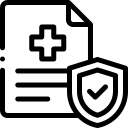
Convenient
at-Home Treatments
9.2 / 10
Customer Satisfaction Score
Soy Allergy Ayurvedic Treatment
The Soy Allergy Ayurvedic Treatment mainly focuses on detoxifying the body through various purificatory therapies (Panchkarma), balancing the Dosha mainly Kapha, and Vata, and also strengthening the weak digestive fire and boosting immunity. Various dietary modifications along with lifestyle guidance should be given as per Ayurveda to get the best results for soy allergy.
We at IAFA Ayurveda provide effective purificatory and palliative therapies for Ayurvedic treatment of Soy Allergy. Dr. Gupta’s IAFA is the perfect destination for treating Soy Allergy as well as other types of allergies. The Ayurvedic approach that is used to treat Soy allergy is as follows:-
Detoxification Therapy (Shodhana Therapy) for Soy Allergy
1. Emetic therapy (Vamana) – For expelling excessive Kapha from the patient of soy allergy, controlled therapeutic vomiting is done. In children in severe cases, mild emetic therapy (Mridu Vamana) is given under observation.
Benefits: Emetic therapy helps in the removal of Kapha Dosha from the body and is indicated in Kapha imbalance-related symptoms like respiratory issues and skin reactions like itching (Kandu), etc.
2. Purgation Therapy (Virechana) – Therapeutic purgation is done in soy allergy patients to get effective results in Pitta-related symptoms like skin rashes, acidity, skin inflammation, etc. Purgative therapy also helps in clearing toxins (Ama) from the digestive system.
3. Nasal Therapy / Intra Nasal Instillation (Nasya) – Medicated oil or powder is administered through the nostril for managing respiratory issues related to soy allergy like wheezing, nasal congestion, etc.
4. Bloodletting therapy (Rakta Mokshana) – With the use of various techniques like leech therapy (Jaloka Avacharana), the removal of impure blood is done from the body in bloodletting therapy. This therapy is very beneficial in Kapha and Pitta-related conditions like inflammation, skin rashes, etc.
5. Oil Massage with Steam Therapy (Abhyanga with Swedana) – Oil massage with oil like Ksheerbala Taila or Dashmoola Taila is given along with steam therapy to remove toxins, and improve circulation in the body.
Herbs for Soy Allergy
Herbs for Soy Allergy Ayurvedic Treatment includes Ashwagandha (Withania somnifera), Shunthi (Zingiber officinale), Tulsi (Ocimum sanctum), Haridra (Curcuma longa), Neem (Azadirachta indica), Guduchi (Tinospora cordifolia), etc.
These herbs possess antimicrobial, anti-inflammatory, antihistamine, detoxifying, blood purifying, immunomodulatory, anti-stress properties, etc. which help in reducing skin rashes, enhancing immunity, preventing hypersensitivity reactions, helps in relieving digestive discomfort and boosting digestive fire (Agni).
Gem Therapy for Soy Allergy
Stones can be worn for Soy allergy as per Vedic Astrology. These stones can be worn after proper consultation with an astrologer as per your birth date, Zodiac sign, etc. to get benefits for soy allergy after proper purification and energization.
As per astrology, Pearl (Moti), Emerald (Panna), and Yellow Sapphire (Pukhraj) can be worn as per the natal chart if you are suffering from soy allergy. These stones help in balancing Pitta and Kapha, enhance respiratory functions, prevent hypersensitivity reactions, and reduce inflammation, etc. in soy allergy.
Diet and Lifestyle Guidance (Pathya-Apathya) for Soy Allergy
According to Ayurveda, if your diet is correct then medicine is of no use because a good gut is considered as the basis of a healthy individual. So, by giving attention to our daily diet, we not only get relief from the disease from which we suffer but also avoid upcoming diseases. Below we mention some dietary and lifestyle guidelines that one can follow for Soy Allergy:-
What to Do (Pathya) in Soy Allergy?
- Kapha pacifying food like warm (Ushan), light (Laghu), and dry (Ruksha) food like barley, and green pulse (Moong Dal) should be used.
- Pitta pacifying food that is cool (Sheeta) and soothing like cucumber, clarified butter (Ghrita), and coconut water should be included in the diet.
- Digestive fire-enhancing food (Agni Vardhaka Aahara) like cumin water (Jeeraka Jala), ginger tea (Adraka Phanta), turmeric (Haridra), etc should be included in the diet.
- Drink water as much as you can to remove toxins (Ama) from the body.
- Various herbs like Neem and Giloy can be included in the diet in the form of soups tea or decoction (Kwatha).
- Practice meditation and yoga regularly.
- Take proper sleep regularly.
What to Avoid (Apathya) in Soy Allergy?
- Soy and soy-derived foods like tofu, soy flour, and soy milk should be avoided.
- Any type of fermented and processed food that contains soy as a hidden ingredient should be avoided.
- Avoid cold (Sheeta) and heavy (Guru) Aahara which result in suppression of digestion and aggravation of Kapha.
- Avoid exposure to a polluted environment which can trigger allergies.
- Avoid soy protein concentrate, soy protein isolate, etc.
Yoga Asana for Soy Allergy
Yoga Asanas for Soy Allergy includes Half spinal twist (Ardha Matsyendrasana), Cobra pose (Bhujangasana), Camel pose (Ustrasana), Bow pose (Dhanurasana), Corpse Pose (Shavasana), Deep breathing technique (Pranayama) like Bhastrika Pranayama, Anuloma-Viloma, Meditation, etc.
These Yogic Asanas improve respiratory health, restore Kapha imbalance, strengthen immunity, relieve stress, improve metabolism, etc.
Frequently Asked Questions
Question: What is a Soy Allergy?
Answer: The abnormal immunological response of the body to the various soy proteins like Gly m 4, Gly m 6, etc. is known as soy allergy.
Question: Which Herbs are Best for Soy Allergy?
Answer: Herbs like Neem, Tulsi, Haridra, Ashwagandha, etc. are considered best for soy allergy.
Question: Is Soy Allergy Life-Threatening?
Answer: Yes, in severe cases soy consumption can cause potentially fatal reactions which may be life-threatening.
Question: Are Soy Derivatives Safe for Soy-Allergic Individuals?
Answer: No, soy derivatives are not safe for individuals with soy allergy as they can trigger the allergy in them.
Question: How Common is Soy Allergy in Children?
Answer: Soy allergy is most common in children i.e. approximately 0.4% of the population suffer from it.
Question: What is the Role of Digestive Fire in Soy Allergy?
Answer: If the digestive fire of the individual is low or weak then they fail to digest soy proteins leading to toxin formation and hyper-sensitivity.
Question: Which Ayurvedic Diet is Best for Soy Allergy?
Answer: The individual with soy allergy should take Kapha and Pitta Pacifying foods and avoid soy food, soy derivatives, and processed food containing soy as hidden ingredients.
Question: How to Treat Soy Intolerance?
Answer: One can manage Soy intolerance by eliminating soy products, taking digestive enzymes, and improving gut health by taking various Ayurvedic remedies like Trikatu Churna, Panchkol Churna, etc.
Question: How to Treat Soy Milk Allergy?
Answer: Complete avoidance of soy products is the primary need to treat soymilk allergies. In Ayurveda, it is suggested to take anti-allergic herbs like Haridra (turmeric), Shirisha, and Giloy. Antihistamines can help with mild reactions, while in severe cases epinephrine may be needed.
Question: How to Get Rid of Soy Intolerance?
Answer: Improving digestion with Ayurvedic herbs like Pippali, Ajwain, Ginger, Saunth, Maricha, etc, and the use of fermented foods can help. Along with this, a low-soy diet and gradual reintroduction (Anshansha Kalpana) under supervision may help to get rid of soy intolerance.
Question: How to Get Rid of Soy Allergy?
Answer: Ayurvedic detoxification therapy (Panchakarma) and rejuvenation therapy (Rasayana therapy) along with the elimination of soy products and gradual reintroduction can strengthen the immune response and help to get rid of Soy allergy.
Question: What Are the Key Differences Between Soy Intolerance and Soy Allergy?
Answer: Soy intolerance is a non-life-threatening condition that affects digestion (or we can say that it is a digestive issue) and causes bloating, diarrhea, gas, etc. While Soy Allergy mainly affects our immune system, and results in various symptoms like swelling, breathing difficulty, hives, and anaphylaxis in severe cases.
References
- S, Manasa & Mahesh, T & Rajashekhar, C. (2021). AYURVEDIC APPROACH ON LICHEN PLANUS WITH SPECIAL REFERENCE TO KITIBHA KUSHTHA: A CASE STUDY. International Journal of Research in Ayurveda and Pharmacy. 12. 33- 38. 10. 7897/ 2277- 4343. 1204102.
- PS Berbi, Sourabha S Kokatnur, Ayurvedic management of Kitibha Kushta – A Case Study. J Ayu Int Med Sci. 2022; 7 (1): 390- 398.
- Gonzalez-Moles MA, Warnakulasuriya S, Gonzalez-Ruiz I, Gonzalez-Ruiz L, Ayen A, Lenouvel D, Ruiz-Avila I, Ramos-Garcia P. Worldwide prevalence of oral lichen planus: A systematic review and meta-analysis. Oral Dis. 2021 May; 27 (4): 813- 828. doi: 10. 1111/ODI. 13323. Epub 2020 Apr 2. PMID: 3214- 4836.
- Nampalliwar, Amit & Biradar, Dr. (2021). AYURVEDIC MANAGEMENT OF LICHEN PLANUS: A CASE REPORT. International Ayurvedic Medical Journal. p5. 3043- 3049. 10. 46607/ iamjp- 145052021.
- Ratha KK, Barik L, Panda AK, Hazra J. A single case study of treating hypertrophic lichen planus with Ayurvedic medicine. Ayu. 2016 Jan- Mar; 37 (1): 56- 61. Doi: 10. 4103/ ayu. AYU_ 1_ 16. PMID: 2882- 7956; PMCID: PMC- 5541468.
- Arnold DL, Krishnamurthy K. Lichen Planus. In: Stat- Pearls. Treasure Island (FL): Stat- Pearls Publishing; 2025 Jan.
- Weston, G., & Payette, M. (2015). Update on lichen planus and its clinical variants. International Journal of Women’s Dermatology, 1 (3), 140-149.
Seek Expert Advice
Dr. Gupta’s IAFA is a pioneering center in Ayurvedic treatment for various diseases including Soy Allergy. IAFA Ayurveda ensures good results and relief to all suffering from the distressing effects of Soy Allergy.
Visit IAFA and feel the true sense of health through Ayurveda!!! For personalized treatment of Soy allergy, Book your appointment now!!!
Was this Page Helpful?
So, IAFA’s Ayurvedic Management of Soy Allergy is Just 3 Steps away!

01. Connect With Us
Share your history of illness or Book your appointment

02. Consult With Us
Dr. Gupta a certified Ayurvedic Allergist Consultant

03. Root Cause Treatment
Get an accurate diagnosis, medicines, diet & lifestyle change
Real Case Studies – Successfully Treated Patients
Real Case Studies of Successfully Treated Patients from All Around the World by IAFA Ayurveda®

9 Year Old Female Patient Recovered from Chronic Allergic Bronchitis – A Case Study
This case study presents a 9-year-old female patient who has successfully recovered…

12-Year-Old Child Recovered from Sun Allergy and Polymorphous Light Eruption (PMLE) – A Case Study
This is a case study of a 12-year-old child who has successfully…

40-Year-Old Female Patient Recovered from Dyshidrotic Eczema and Onychomycosis – A Case Study
This case study highlights the successful recovery of a 40-year-old female patient…

40-Year-Old Female Patient Recovered from Urticaria and Angioedema – A Case Study
This case study focuses on a 40-year-old female patient who has successfully…
Read More Articles

Mast Cell Diseases
Discover Ayurvedic treatment for Mast Cell Diseases, including types, causes, symptoms, and…

High Immunoglobulin-E (IgE) Levels
Discover Ayurvedic treatment for high Immunoglobulin-E (IgE) levels. Learn about the causes,…

Histamine Intolerance
Discover Ayurvedic treatment for histamine intolerance, its causes, symptoms, and natural treatment.…

